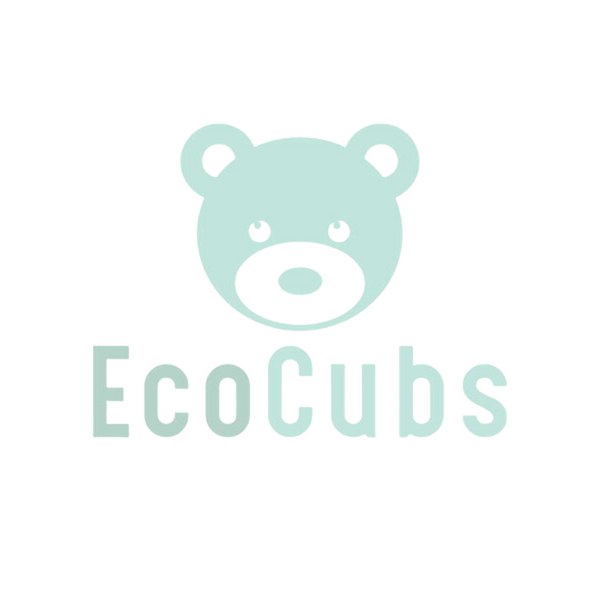
Why We Stopped Using Plastic Kids Plates
I’ll be honest, plastic kids plates were part of our life for years, but here's what made us level up...
Look, they’re cheap, colourful, and pretty much toddler-proof, so I understand why plastic kids plates seem the obvious choice- they were to me. But everything changed the day I read about microplastics being found in humans, including kids- I know that sounds dramatic, but it's true! What really shook me was learning that microplastic had even been found in human placentas. That sent me down a toxic plastic rabbit hole, where I learnt about all the risks associated with plastic, particularly when it comes to food contact materials.
That moment wasn’t just a wake-up call, it was the exact spark that led to the birth of EcoCubs. We knew there had to be a safer, plastic-free option for kids plates, without the harmful melamine binders often used in bamboo dinnerware... & so we created an option that’s natural, sustainable, and designed for little bears.
Why Are Plastic Kids Plates Harmful?
Plastic kids plates may seem practical, but they pose several serious risks to human health and development. When plastic plates are heated, chemicals such as BPA, phthalates, and other hormone-disrupting substances can migrate into food. Even BPA-free plastics often contain alternatives like BPS or BPF, which have similar harmful effects. These chemicals are particularly dangerous for children because their developing brains and bodies are more sensitive to hormone interference. Exposure has been linked to developmental delays, behavioural issues, and weakened immune systems.

What Are Microplastics and Why Should We Care?
Over time, plastic breaks down into microplastics, tiny particles that can enter bodies through food and drink. These microplastics may cause inflammation and disrupt metabolic and endocrine functions, which are crucial during childhood growth. Due to their smaller size and faster metabolism, kids are more vulnerable to the harmful effects of these particles. (UCSF.edu, OASK Publishers)
Plastic Pollution: The Environmental Impact
Most plastic plates are not recyclable and contribute to the growing global plastic pollution problem. This plastic waste often ends up in landfills or oceans, taking hundreds of years to decompose, ultimately impacting the environment. Microplastics also enter the food chain, further increasing exposure risks when it comes back to our food sources like fish!

What Are Safe Alternatives to Plastic Kids Plates?
Many plates marketed as “bamboo” or “plant-based” kids dinnerware actually contain melamine resin, a hard plastic bonded with bamboo fibre. While these plates look natural and eco-friendly, melamine can release harmful chemicals like formaldehyde, especially when heated or scratched. This means they aren’t truly plastic-free and can pose health risks similar to conventional plastic plates.
It's important to read the fine print when it comes to all dinnerware to make sure you're actually getting what you think.
100% Plant Based Dinnerware
Not all bamboo dinnerware is made equal- read the fine print and search for truly plant based materials.
EcoCubs 100% plant-based dinnerware range is all natural bamboo fibre without any melamine or plastic binders- we use starch instead! That means:
- No toxic chemicals or harmful plastics leaching into your child’s food
- Our Plates are fully biodegradable and compostable
- Safe to use for everyday meals, including the dishwasher and microwave!
- FDA & CE certified.
We’re committed to offering truly safe and sustainable kids dinnerware that families can trust- we do the hard work so you don't have to!



Stainless Steel
When it comes to your little one’s mealtime, stainless steel is a top choice for both safety and sustainability. Unlike plastic, stainless steel is completely free from harmful chemicals like BPA, phthalates, or hormone disruptors, making it a safer option for growing kids. It’s super durable, so it won’t crack, chip, or wear down, even after countless washes and tumbles.
Stainless steel plates and cutlery are also naturally hygienic and easy to clean, resisting stains and odours that can linger on plastic. And most are also dishwasher safe! Plus, they’re 100% recyclable at the end of their long life, helping reduce waste and protect the environment your children will grow up in.
However, just like bamboo, not all stainless steel is made equally. Make sure to shop for the highest quality in food contact like 304/316, and that they haven't skipped corners when manufacturing by mixing in cheaper materials that contain lead. When it came to making our own, we even did our own testing ensure they were truly lead-free and our stainless steel plates and bowls are also FDA and CE certified!

How Can I Switch My Family to Plastic-Free Dinnerware?
Switching doesn’t have to be overwhelming. Start small by swapping out plastic plates for plastic-free options. It’s a simple change with big benefits, for your kids’ health and the planet. Explore our full range of kids plates.


 https://admin.shopify.com/store/ecocubs/pages/47942533252
https://admin.shopify.com/store/ecocubs/pages/47942533252